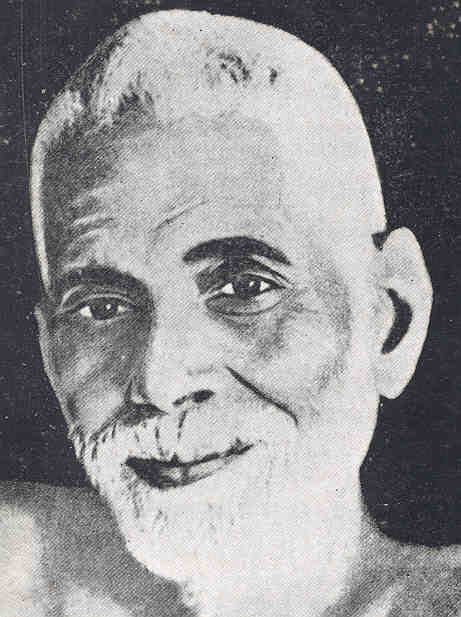
Īccording to Narasimha, in July 1896, at age 16, a sudden fear of death befell him.
RAMANA MAHARSHI EYES FULL
Īccording to Osborne, a new current of awareness started to awakenĭuring his visits to the Meenakshi Temple at Madurai, "a state ofīlissful consciousness transcending both the physical and mental planeĪnd yet compatible with full use of the physical and mental faculties". During this time he also read Sekkizhar's Periyapuranam, a book that describes the lives of the 63 Nayanars, which "made a great impression" on him, and revealed to him that "Divine Union" is possible. He had known of its existence from an early age, and was overwhelmed by the realisation that it really existed. In November 1895 Venkataraman realized that Arunachala, the sacred mountain, was a real place. Venkataraman first attended Scott's Middle School and then theĪmerican Mission High School where he became acquainted with See also: Nayanars, Shaiva Siddhanta, and History of Shaivism After his father's death, the family split up Venkataraman and Nagaswami stayed with Subbaiyar in Madurai. His father, Sundaram Iyer, died suddenly on 18 February 1892. Inĭindigul, Venkataraman attended a Hindu School where English was taught, and stayed there for a year. Venkataraman and his elder brother Nagaswami moved with him. In 1891, when his uncle was transferred to Madurai, Only Tamil was taught at the village school in Tiruchuzhi, which he attended for three years. When he was about eleven his father sent him to live with his paternal uncle Subbaiyar in Dindigul as he wanted his sons to be educated in the English language so that they would be eligible to enter government service. I was lying down in a different narrow space [to the one where I had Sometimes I would be sitting in one place,īut when I regained normal consciousness and got up, I would notice that Sri Ramana Vijayam, the Tamil biography that first appeared in the 1920s, describes a period a few years before the death-experience in Madurai: When he was about twelve years old, he may have experienced spontaneous deep meditative states. Waking up from loud sounds, nor even when his body was beaten by others. Narasimha notes that Venkataraman used to sleep very deeply, not Memory, and was able to recall information after hearing it once, anĪbility he used to memorise Tamil poems.

Into Brahmanical learning and the knowledge of Self. When Venkataraman was seven he had his upanayana, the traditional initiation of the three upper varnas Venkataraman's family belonged to the Smarta denomination, and regular worship of Lord Siva, Lord Vishnu, Lord Ganesa, Lord Surya and Goddess Shakti took place in their home. īoth a paternal uncle of his father and his father's brother had become sannyasins. Venkataraman's father was a court pleader. Nagasundaram (1886–1953), along with a younger sister Alamelu He had two brothers Nagaswami (1877–1900) and (1848–1890), from the lineage of Parashara, and his mother wasĪzhagammal (1864-1922). He was the second of four children in an orthodox Hindu Brahmin family. Ramana Maharshi was born Venkataraman Iyer on 30 December 1879 in the village Tiruchuzhi near Aruppukkottai, Madurai in Tamil Nadu, South India. Ramana Maharshi approved a number of paths and practices, but recommended self-enquiry as the principal means to remove ignorance and abide in Self-awareness, together with bhakti (devotion) or surrender to the Self. Since the 1930s his teachings have been popularized in the West, resulting in his worldwide recognition as an enlightened being. He soon attracted devotees who regarded him as an avatar and came to him for darshan ("the sight of God"), and in later years an ashram grew up around him, where visitors received upadesa ("spiritual instruction") by sitting silently in his company asking questions. Six weeks later he left his uncle's home in Madurai, and journeyed to the holy mountain Arunachala, in Tiruvannamalai, where he took on the role of a sannyasin (though not formally initiated), and remained for the rest of his life. This resulted in a state that he later described as "the state of mind of Iswara or the jnani". In 1895, an attraction to the sacred hill Arunachala and the 63 Nayanars was aroused in him, and in 1896, at the age of 16, he had a "death-experience" where he became aware of a "current" or "force" ( avesam) which he recognised as his true "I" or "self", and which he later identified with "the personal God, or Iswara," that is, Shiva. He was born in what is now Tiruchuli, Tamil Nadu, India.

He was born as Venkataraman Iyer, but is most commonly known by the name Bhagavan Sri Ramana Maharshi.

Ramana Maharshi / ˈ r ʌ m ə n ə m ə h ʌ ˈ r ɪ ʃ i/ (30 December 1879 – 14 April 1950) was a Hindu sage and jivanmukta.


 0 kommentar(er)
0 kommentar(er)
